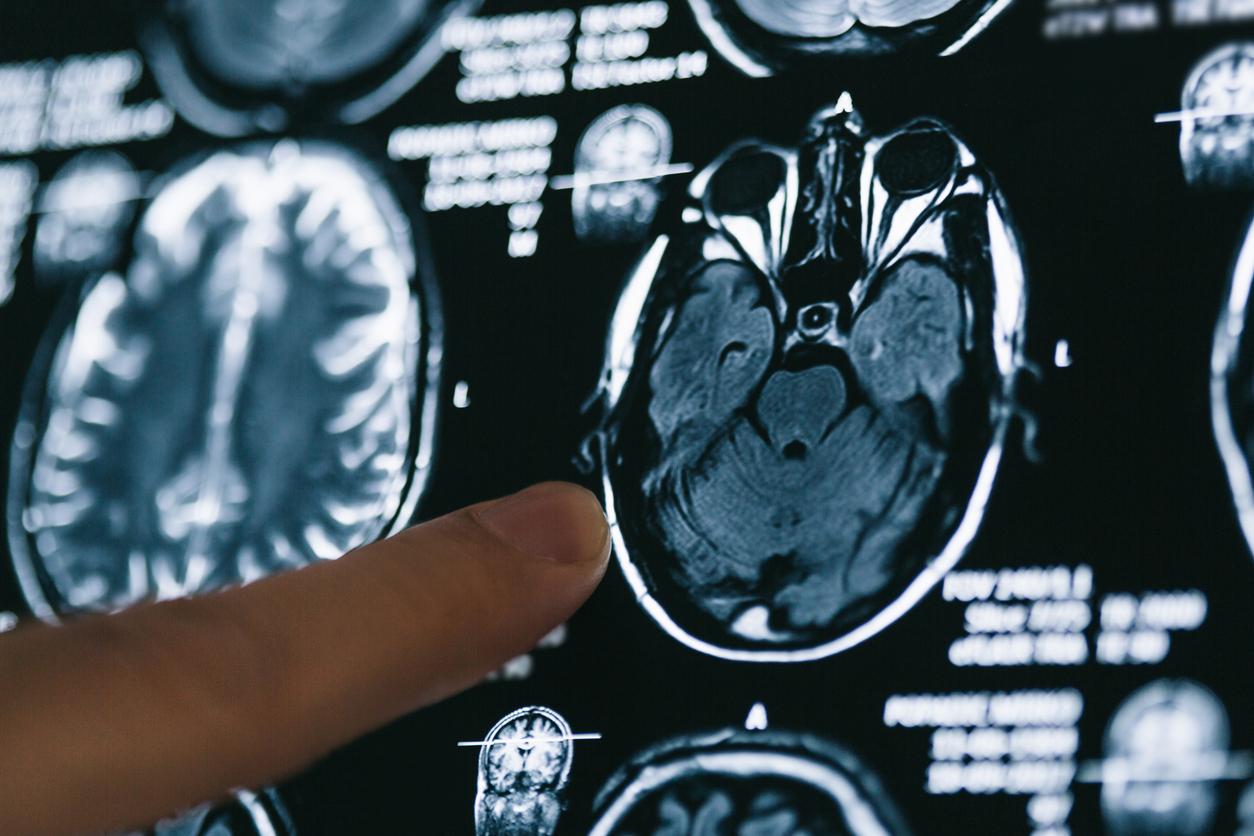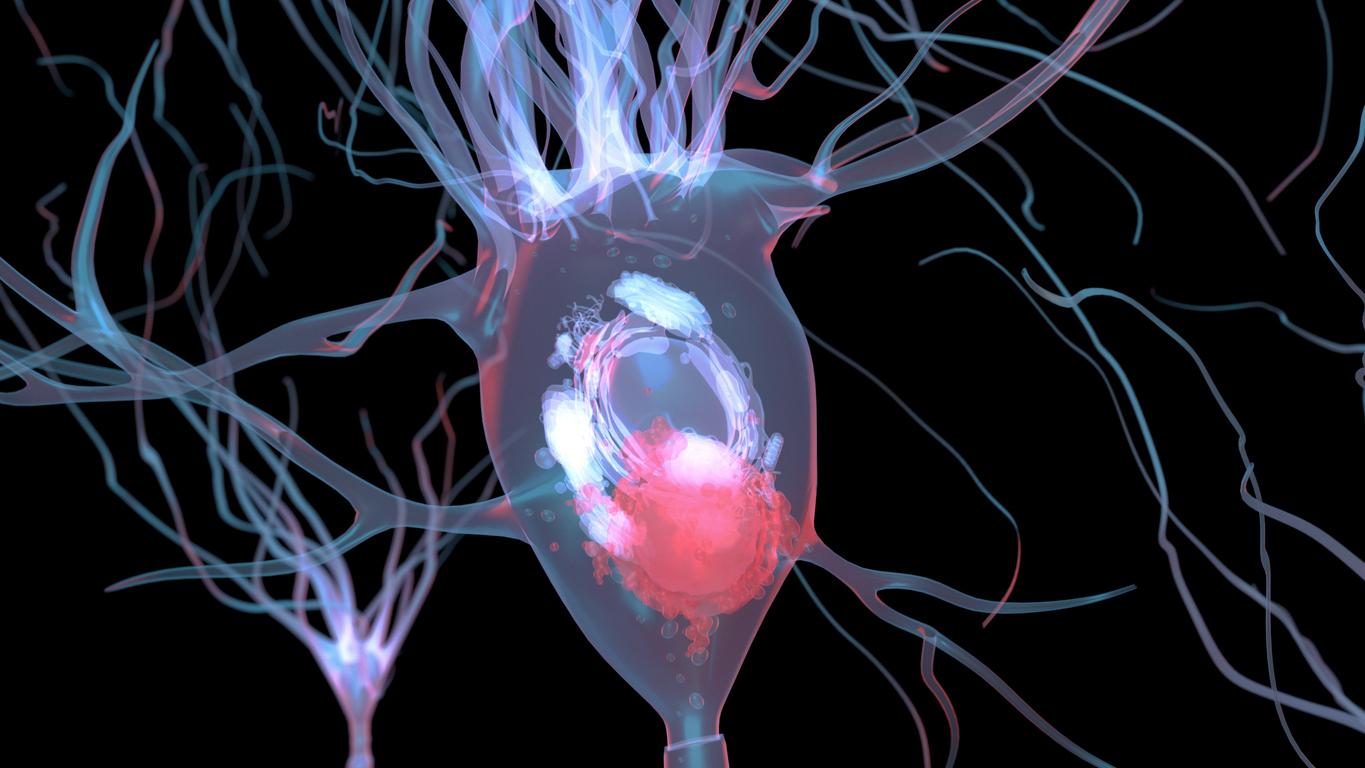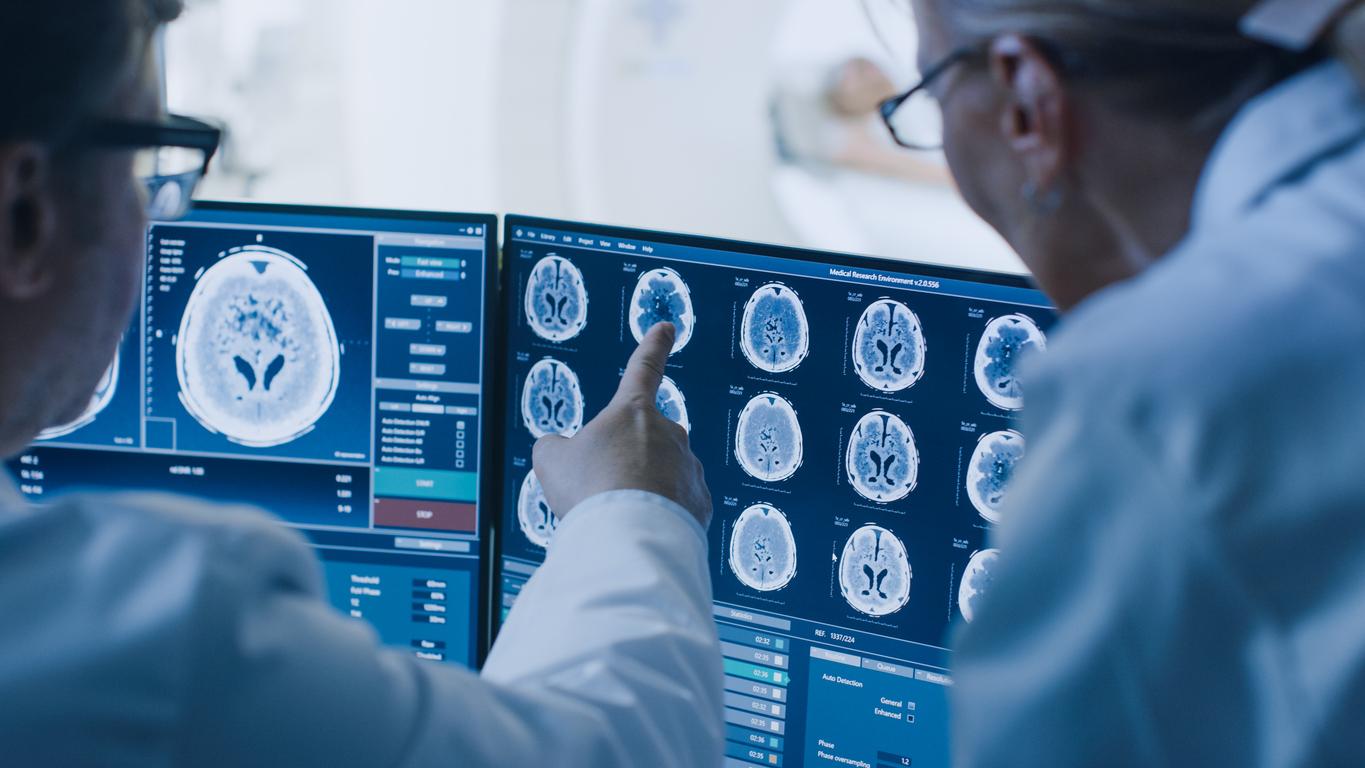A team of neurologists has discovered that up to 20% of all cases of Alzheimer’s disease may be attributable to duplicate copies of the APOE4 gene.

- There are two types of Alzheimer’s disease: genetic forms and late-onset forms. Work has shown that homozygous APOE4 genes, that is to say having two copies, are a risk factor for the genetic form of the disease.
- But a new study suggests that they are not only a factor favoring Alzheimer’s disease, but indeed the cause of the disease in certain cases. Between 15 and 20% of cases of Alzheimer’s disease can probably be attributed to patients with two copies of this gene.
- Proof, according to the researchers, that “cases of Alzheimer’s disease involving homozygous APOE4 genes should be considered a unique type of Alzheimer’s, not just a risk factor.”
Affecting nearly a million people in France, Alzheimer’s disease is a specific type of dementia that involves mental deterioration due to progressive degeneration of the brain. There are believed to be two main types of Alzheimer’s disease: genetic forms and late-onset forms. Previous work has shown that homozygous APOE4 genes, that is to say having two true copies, are a risk factor for the genetic form of the disease.
However, a new study, published in the journal Nature Medicinesuggests that double copies of this gene are not only a factor favoring Alzheimer’s disease, but indeed the cause of the disease in certain cases.
95% of patients carrying the double APOE4 gene developed Alzheimer’s
To arrive at this observation, researchers from the Gladstone Institute of Neurological Disease, in the United States, analyzed data from 3,300 deceased Alzheimer’s patients and biomarkers from some 10,000 other living Alzheimer’s patients, collected in several establishments. medical. They observed that 800 of the study participants had two copies of the APOE4 gene (one from maternal origin, the other from paternal origin), and that virtually all (95%) had elevated levels of amyloid plaques. – one of the diagnostic markers for Alzheimer’s – in their brain fluid at the age of 65, ten earlier than the average. Which indicates that “the disease was completely penetrating” in these patients, can we read in a communicated.
Even though people carrying homozygous APOE4 genes only represent up to 3% of the world’s population, the results reveal that between 15 and 20% of Alzheimer’s disease cases can probably be attributed to patients with two copies. of this gene. Until then, it was thought that only 2% of cases had a genetic cause. This is proof, according to the team of researchers, that “Cases of Alzheimer’s disease involving homozygous APOE4 genes should be considered a unique type of Alzheimer’s, not just a risk factor.”

Better understand the role of genes in Azheimer’s disease
For the moment, neurologists recommend not doing a genetic test aimed at identifying the presence of both copies of APOE4, given that no treatment exists: knowing that you are a carrier would only cause illness. ‘worry. But the study results could encourage the inclusion of young carriers in clinical trials, to improve understanding of the role of genes in the development of the disease.

















